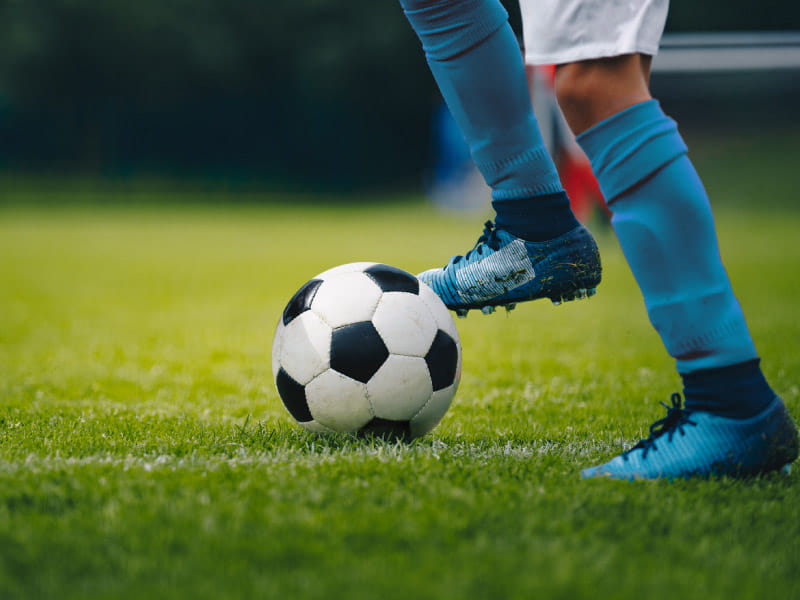Ball control techniques in soccer
For any football player, whether professional or amateur, mastering ball control technique is essential. However, becoming the "master" of the ball requires a process of persistent, scientific, and rational training.
Ball Control Technique in Football
Additionally, you can enhance your football skills at the Youth Sports Center. The center continuously recruits students aged 6 to 16 for football classes for children in Hanoi.
Beginner's Guide to Training Ball Control Technique When starting to play soccer prediction of the day, mastering ball control technique is a mandatory requirement for all players to train and become proficient. However, ball control technique in football is not simple.
To master the basic ball control technique, you need to have a systematic, scientific, and regular training process. In particular, you need to pay attention to practicing the following movements:
Ball control with the instep: Ball control with the instep is divided into controlling the ball flat and controlling the ball on the bounce.
There are slight differences between these good ball control techniques. The movements you need to practice are as follows:
Place your foot opposite to the direction of the ball, with the knee slightly bent, forming an angle of about 25°.
Learn more skills you need to know in soccer such a football prediction site with 100 accuracy
One shoulder should face the direction of the ball, the foot controlling the ball opens outward, the instep is parallel to the ground, and the instep faces forward.
Maintain a stable stance, slightly raise your body to control the ball's center of gravity, and be able to quickly handle the ball when opponents approach.

For bouncing balls, the best ball control technique is to actively control the instep. Next, when receiving the ball, your instep should be directed towards the ground to prevent the ball from bouncing off.
Ball control with the thigh and instep: The upper body leans slightly towards the direction of the ball. At the same time, one foot is placed beside the ball, the toe facing the direction of the ball, the knee slightly bent, and the foot controlling the ball raised, the knee joint is flexed, and the instep is raised to form a smaller angle with the ground than 90º.
Key Considerations for Practicing Ball Control Technique During the process of practicing ball control technique, you need to pay attention to avoiding the following common mistakes:
When your foot makes contact with the ball, it should be delicate. It is best to touch the ball with just the right force to prevent the ball from slipping off your foot.
You need to be able to predict the direction of the ball and the landing point. If you misjudge the landing point of the ball, no matter how good your ball control technique is, you will not be able to handle the ball successfully.
The standing position and body orientation actively receive the ball, which is also a crucial requirement for controlling the ball well. If you stand in the wrong position, receiving the ball will be very difficult.
Practical experience shows that when receiving the ball, players should stand slightly bent, facing forward. This way, when the ball comes, you will always master the basic ball control technique and be able to handle it quickly.
Another common mistake players make when demonstrating good ball control is when they have just made contact with the ball but have not raised their body to create a gap in time for ball control and they raise their body too long, unable to control the ball in time, leading to mistakes.
By overcoming these shortcomings, you will easily master good ball control techniques and confidently demonstrate these skills on the field, becoming a proficient player in the sport of football.
Sure, here are some expert football tips that can help you improve your betting strategy:
Research Teams Thoroughly: Before placing any bets, conduct in-depth research on the teams involved in the match. Look into their recent form, head-to-head statistics, home and away records, and any other relevant factors that could influence the outcome.
Analyze Team News: Keep an eye on team news, including injuries, suspensions, and lineup changes. This information can have a significant impact on a team's performance and the outcome of the match.
Consider Motivation: Consider the motivation of both teams, especially in cup competitions or towards the end of the season. Teams fighting for promotion, battling relegation, or competing for a trophy may display different levels of determination and performance.
Look for Value Bets: Look for value bets by analyzing the odds offered by bookmakers. Identify instances where the odds appear to be higher than the probability of the outcome occurring based on your research and analysis.
Understand Different Markets: Familiarize yourself with different betting markets beyond just the match result. Explore markets such as over/under goals, Asian handicap, both teams to score, and player-specific markets to find betting opportunities with favorable odds. |

